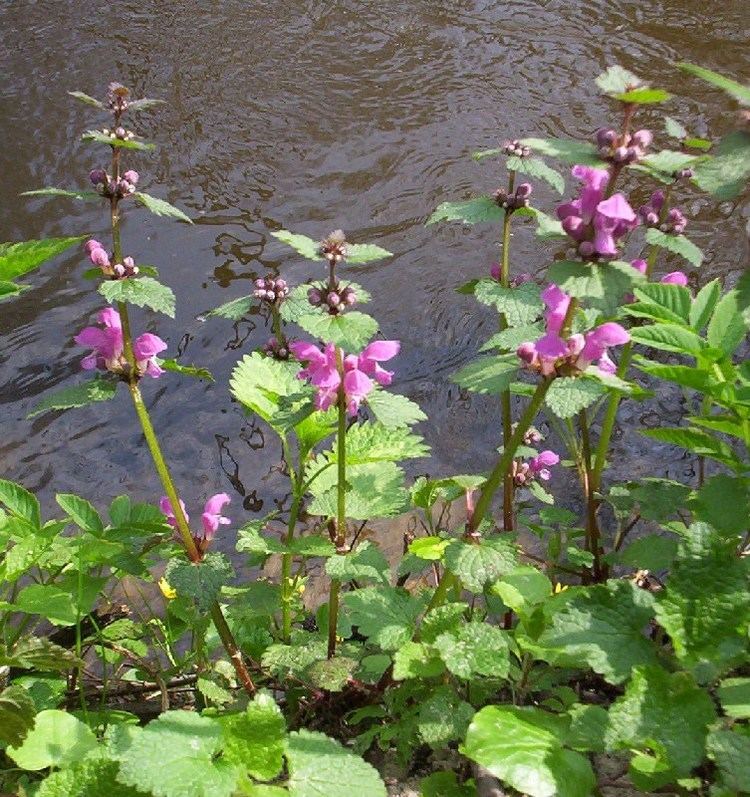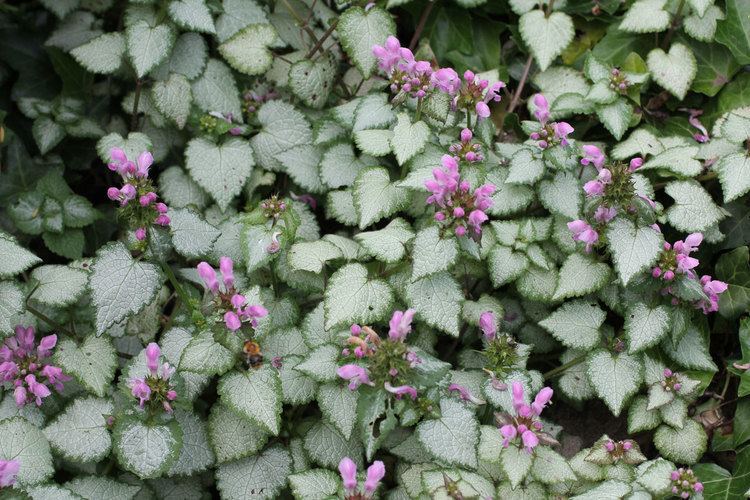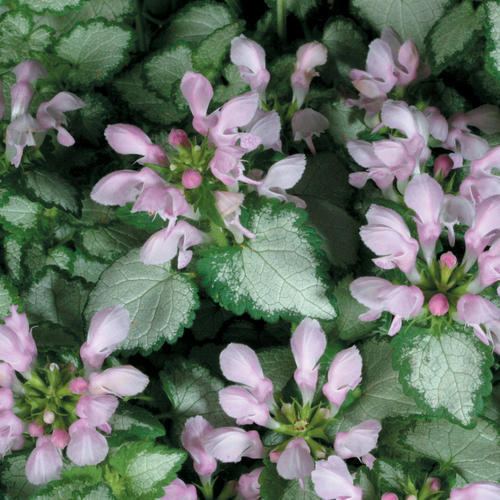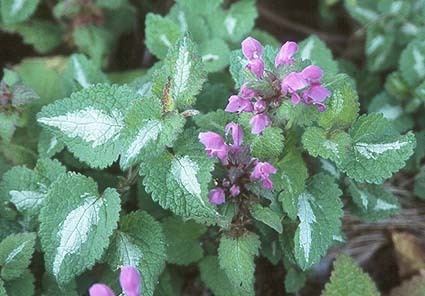Rank Species | Genus Lamium Higher classification Dead-nettles | |
 | ||
Similar Dead‑nettles, Lamium galeobdolon, White nettle, Ajuga reptans, Purple Deadnettle | ||
Striped spotted deadnettle lamium maculatum variegatum 2012 05 12
Lamium maculatum (also known as spotted dead-nettle, spotted henbit and purple dragon) is a species of flowering plant in the family Lamiaceae, native throughout Europe and temperate Asia (Lebanon, Syria, Turkey, western China).
Contents
- Striped spotted deadnettle lamium maculatum variegatum 2012 05 12
- Spotted deadnettle lamium maculatum 2012 05 12
- Description
- Habitat
- Cultivation
- References

Spotted deadnettle lamium maculatum 2012 05 12
Description

Lamium maculatum is a prostrate, spreading herbaceous perennial. This species is very variable in terms of leaf size and shape, hairiness and flower colours. It reaches on average 20–80 centimetres (7.9–31.5 in) in height. It has erect, hollow and pubescent stems, branched at the base only. The soft hairy leaf blades are about 8 inches long. They are spotted (hence the Latin name maculatum), toothed with long petioles, about 2–4 centimetres (0.79–1.57 in) long. Their shape varies from ovate-triangular to heart-shaped. The inflorescence bears about two to eight hermaphrodite flowers about 20–30 millimetres (0.79–1.18 in) long. The flowers of the plant are formed in the leaf axils of the upper leaf pairs. The upper lips of the flowers are helmet-shaped, usually pink or purplish, while the bilobate lower ones are whitish with purple dots. The stamens are located in the upper lip and have orange pollen. The flowering period extends from April through November.

It tends to grow higher in spring while during the colder weather it is much flatter to the ground. If subjected to light frost, L. maculatum will recover in spring as it enters its growth cycle.
Habitat
It grows in a variety of habitats from open grassland to woodland, generally on moist, fertile soils at an altitude of 0–1,200 metres (0–3,937 ft) above sea level.
Cultivation

Lamium maculatum is valued as groundcover in moist, shady areas. It will rapidly colonise an area, and may become invasive given suitable growing conditions. Numerous cultivars have been developed, mainly for their coloured and varigated leaves, including:-
